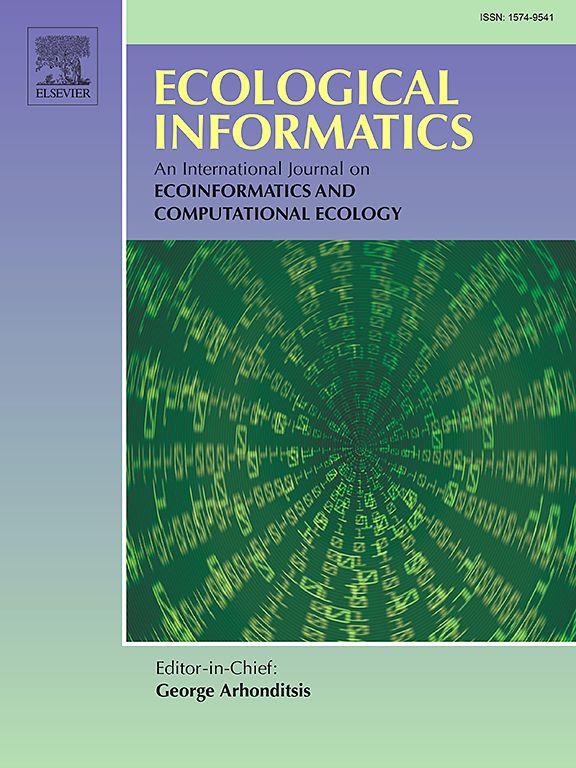利用Sentinel-2遥感数据预测河网浊度的机器学习方法评估
IF 5.8
2区 环境科学与生态学
Q1 ECOLOGY
引用次数: 0
摘要
浊度是河流水质的重要指标,对改善数据采集方法和生态系统可持续管理决策支持系统的效率具有重要意义。然而,河流水质监测站的运营和维护成本非常高,而且缺乏空间覆盖。因此,本研究利用卫星遥感数据集的广泛空间覆盖,提供一个更有效的混合系统,全面覆盖广大河网的水质时空变化。利用美国密西西比河12个监测站的数据,利用XGBoost、随机森林、GMDH、支持向量回归、k近邻、最小绝对收缩和选择算子等机器学习算法对Sentinel-2的光谱波段进行分析,以模拟浊度。结果表明,考虑到单个监测站,浊度建模的ML算法在浊度值范围和标准差较大的位置是令人满意的,平均R2值为59.5%。基于树的模型是最好的综合方法,通常被列为最好或第二好的模型。使用来自监测站的所有样本,XGBoost为浊度建模提供了优越的输出,达到R2等于75.7%。与单个站点的平均度量值相比,这代表了超过16%的改进。与文献的全面比较发现,使用本研究方法实现的模型可以提供有竞争力的结果,认为它是遥感数据浊度建模的替代方案。本文章由计算机程序翻译,如有差异,请以英文原文为准。
Evaluation of machine learning methods for forecasting turbidity in river networks using Sentinel-2 remote sensing data
Turbidity is an important indicator of river water quality and of great interest to improve the data acquisition methods and efficiency of decision support systems for sustainable ecosystem management. However, river water quality monitoring stations are very expensive to operate and maintain and lack spatial coverage. Therefore, this study takes advantage of the vast spatial coverage of remote sensing datasets from satellites to provide a more efficient hybrid system with comprehensive coverage of both spatial and temporal changes in water quality across a vast river network. Spectral bands from Sentinel-2 were analyzed using machine learning algorithms, namely XGBoost, Random Forests, GMDH, Support Vector Regression, k-Nearest Neighbors and Least Absolute Shrinkage and Selection Operator to model turbidity, using data from twelve monitoring stations across the Mississippi River, USA. Results show that considering the individual monitoring stations, the ML algorithms for turbidity modeling were satisfactory at locations with a larger range and standard deviation of turbidity values, achieving a mean R2 value of 59.5 %. Tree-based models were the best overall approach, often ranking as the best or second-best performing model. Using all the samples from the monitoring stations, the XGBoost provided a superior output for turbidity modeling, reaching R2 equal to 75.7 %. This represents an improvement of over 16 % compared to the average metric value for the individual stations. A comprehensive comparison with the literature found that the models implemented using this study's methodology could provide competitive results, deeming it as an alternative for turbidity modeling from remote sensing data.
求助全文
通过发布文献求助,成功后即可免费获取论文全文。
去求助
来源期刊

Ecological Informatics
环境科学-生态学
CiteScore
8.30
自引率
11.80%
发文量
346
审稿时长
46 days
期刊介绍:
The journal Ecological Informatics is devoted to the publication of high quality, peer-reviewed articles on all aspects of computational ecology, data science and biogeography. The scope of the journal takes into account the data-intensive nature of ecology, the growing capacity of information technology to access, harness and leverage complex data as well as the critical need for informing sustainable management in view of global environmental and climate change.
The nature of the journal is interdisciplinary at the crossover between ecology and informatics. It focuses on novel concepts and techniques for image- and genome-based monitoring and interpretation, sensor- and multimedia-based data acquisition, internet-based data archiving and sharing, data assimilation, modelling and prediction of ecological data.
 求助内容:
求助内容: 应助结果提醒方式:
应助结果提醒方式:


